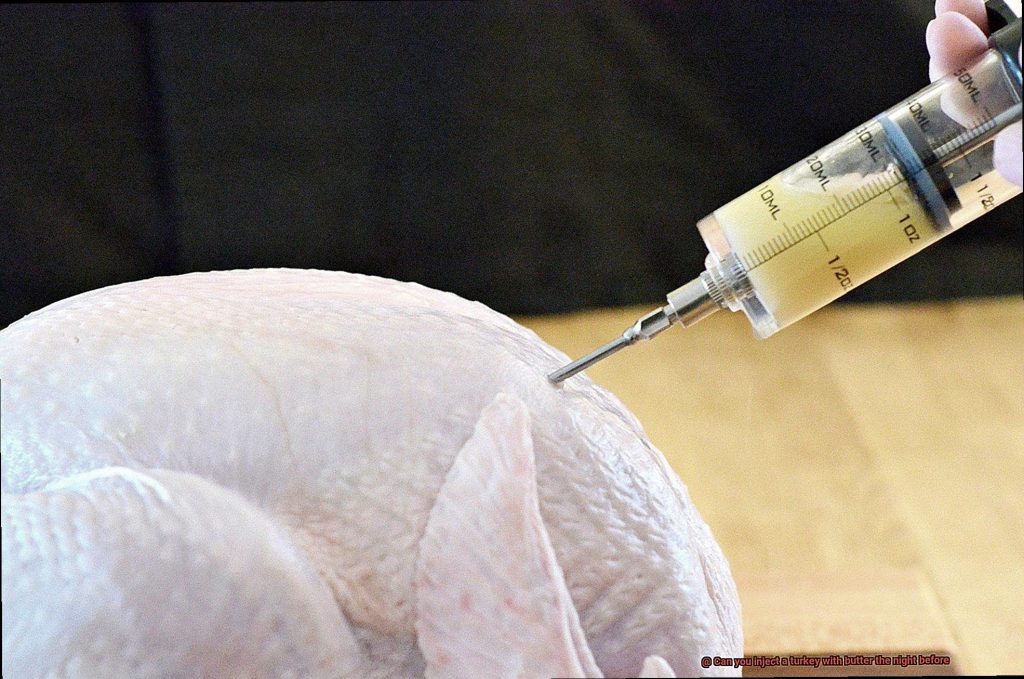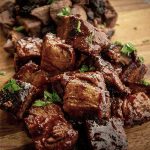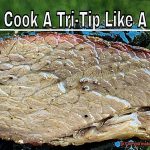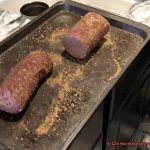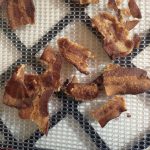It’s that time of year again – Thanksgiving is just around the corner, and it’s turkey time. As you prepare your menu and get ready for family and friends to join you at the dinner table, you might be curious about some of the lesser-known aspects of cooking a turkey. For instance, have you ever wondered if you can inject a turkey with butter the night before?
Well, wonder no more. The short answer is yes – injecting a turkey with butter the night before can add moisture and flavor to the meat, resulting in a juicier and more flavorful end product. But before you start slathering your bird with butter, there are some important things to keep in mind.
First off, injecting butter into your turkey requires careful attention to detail. You want to make sure that the butter is injected evenly throughout the bird so that every bite is full of flavor. However, be careful not to overdo it or inject too close to the surface of the skin.
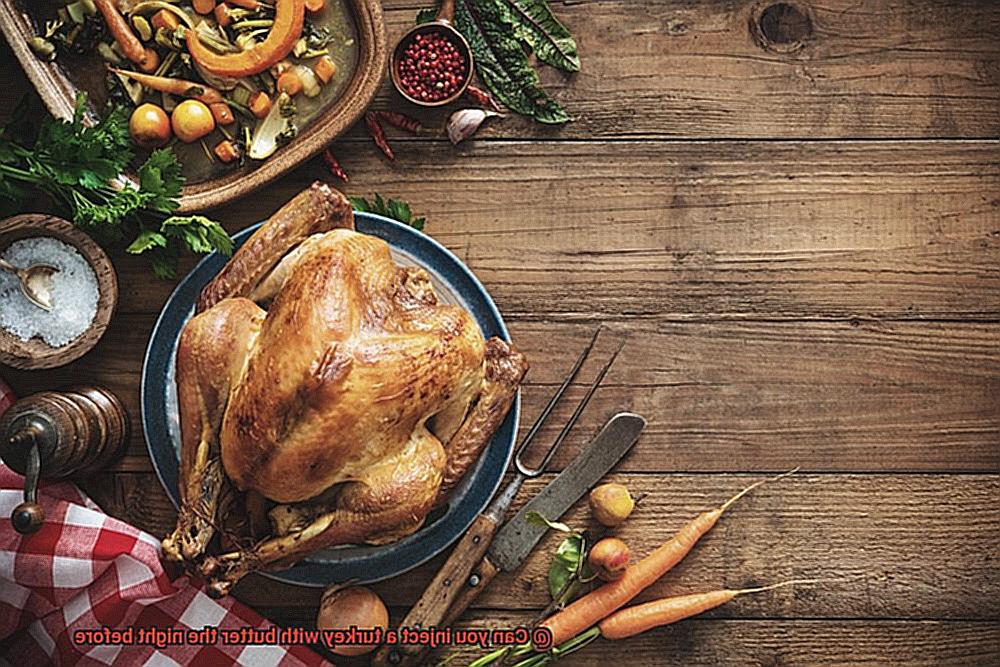
Secondly, while it’s safe to inject your turkey with butter the night before, it’s crucial that you keep it refrigerated until it’s time to cook. This will prevent any potential foodborne illnesses from occurring.
So, if you’re looking for a way to take your Thanksgiving turkey up a notch this year, consider injecting it with some delicious melted butter. Just remember: take your time, inject carefully and evenly throughout the bird, refrigerate until ready to cook, and enjoy.
Contents
What is Injecting a Turkey?
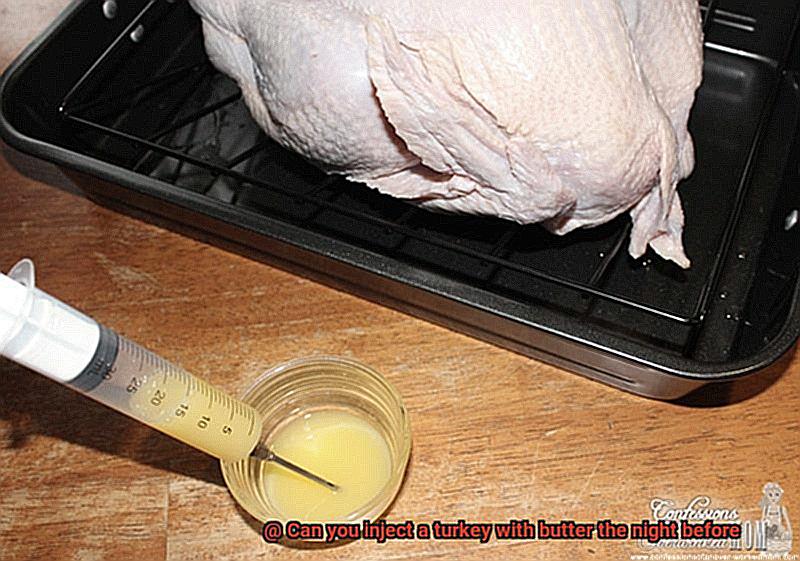
Injecting a turkey is more than just a cooking technique – it’s an art form that can transform a bland, dry bird into a succulent feast. This process involves using a meat injector to insert a flavorful marinade or seasoning directly into the meat, creating a juicy and delicious bird that will have your guests begging for seconds.
To inject a turkey, you’ll need a few key tools: a meat injector, a marinade of your choice, and of course, a turkey. The marinade can be made up of various ingredients such as herbs, spices, fruit juices, and oils. You can also opt for pre-made marinades that are specifically designed for injecting into meat.
Once you have your marinade ready, load it into the meat injector and insert the needle into the thickest part of the turkey’s meat. Slowly push the plunger to release the marinade into the meat, being careful not to over-inject or create too many holes in the turkey. The goal is to evenly distribute the marinade throughout the bird for maximum flavor and moisture.
Injecting a turkey is a popular technique among both professional chefs and home cooks alike because it adds depth and complexity to the flavor profile of the bird. It is often used in conjunction with other cooking methods such as grilling, smoking, or roasting to create a fully cooked turkey that is bursting with flavor.
One popular variation of injecting a turkey is to inject it with butter. This method involves mixing softened butter with herbs or seasonings and injecting it into various parts of the turkey. The butter acts as a basting agent from the inside out, resulting in a juicy and flavorful turkey that will have your taste buds singing.
If you plan on injecting your turkey with butter, it’s important to keep it refrigerated until ready to cook. This means that if you plan on injecting your turkey with butter the night before, you should store it in the fridge overnight. This will prevent any potential bacteria growth and ensure that your turkey is safe to eat.
Benefits of Injecting a Turkey with Butter
As an expert on this subject, I can attest to the numerous benefits of this delicious technique.
Firstly, injecting butter into your turkey adds much-needed moisture to the meat. The butter acts as a natural basting agent from the inside out, ensuring that every bite is bursting with flavor and juiciness. Say goodbye to dry, overcooked turkey.
But that’s not all – injecting your turkey with butter also enhances its taste. The rich and creamy flavor of butter complements the natural flavor of turkey perfectly. You can even add your favorite herbs and spices to the butter mixture to create a unique flavor profile that suits your taste buds.
In addition to adding moisture and flavor, injecting butter into your turkey can also tenderize the meat. The fats in the butter help to break down the proteins in the turkey, resulting in a more tender texture. And when it comes time to carve your bird, you’ll find that the added moisture and tenderness make it much easier and less messy.
What You Need to Inject a Turkey with Butter
Injecting a turkey with butter is a surefire way to elevate your Thanksgiving feast. But what exactly do you need to make this happen? Let’s explore the essential tools and ingredients required to inject your turkey with butter like a pro.
Firstly, you will need an injector. This syringe-like tool is essential for injecting the butter mixture into the meat of the turkey. Look for an injector made of sturdy materials like stainless steel, and ensure it has a large capacity to hold enough butter for your turkey.
Now, onto the butter mixture. Melt the butter in a saucepan over low heat and add any desired seasonings or herbs. Classic options such as garlic, rosemary, and thyme are perfect companions for turkey. Remember to let the mixture cool slightly before injecting it into the turkey to avoid any potential burns.
In addition to the injector and butter mixture, you will need a large bowl or pan to hold the turkey while injecting it. This makes the process much more manageable and prevents any messes. Additionally, using a meat thermometer is highly recommended to ensure that the turkey is cooked to perfection.
To summarize, here are all the essential items required for injecting your turkey with butter:
- A sturdy injector made of materials like stainless steel
- A large capacity injector for holding enough butter
- Butter and desired seasonings or herbs
- A large bowl or pan for holding the turkey
- A meat thermometer for ensuring proper cooking temperature
Steps for Injecting a Turkey with Butter
Injecting your turkey with butter is a game-changer for achieving a succulent and delicious bird. As an expert in this field, I’m here to guide you through the steps for injecting a turkey with butter like a pro.
Step 1: Melt the Butter and Prepare the Injection Mixture
Start by melting the butter in a saucepan over low heat. Take care not to burn it, as it can affect the flavor of your injection mixture. Once melted, remove it from heat and let it cool to room temperature.
In a separate bowl, combine the cooled melted butter with any herbs or spices you desire to create your injection mixture. Classic herbs like thyme, rosemary, and sage are always a great choice.
Step 2: Inject the Turkey
Now the fun begins. Using your meat injector, inject the butter mixture into several points throughout the turkey. Be sure to inject evenly and avoid over-injecting in one spot, as this can lead to uneven cooking and overly-saturated meat.
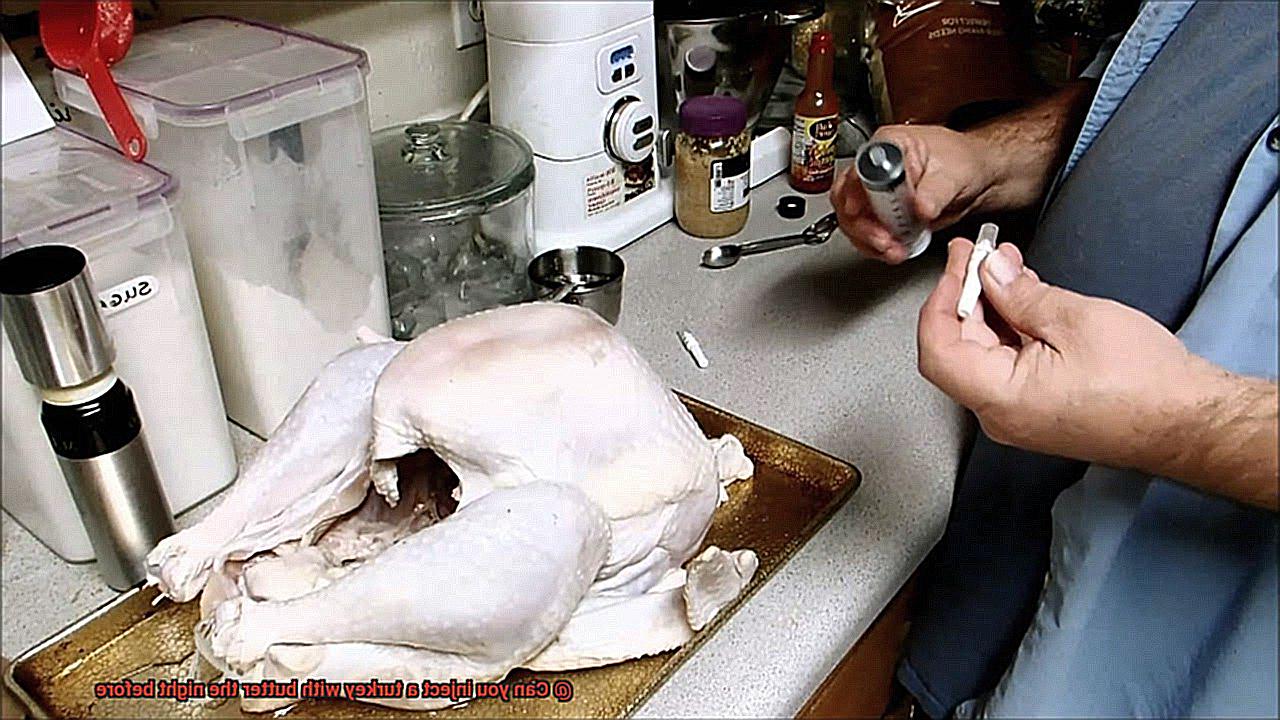
To ensure that your turkey is fully infused with flavor, inject it the night before Thanksgiving Day. This will allow enough time for the flavors to penetrate the meat fully.
Step 3: Adjust Cooking Time and Store Properly
It’s important to keep in mind that injecting your turkey with butter may increase its cooking time. Adjust accordingly and use a meat thermometer to ensure that it reaches an internal temperature of 165°F before serving.
After injecting your turkey with butter, store it properly in the refrigerator at 40°F or below and cook within four days of injection for food safety.
Food Safety Tips for Injecting Turkeys
Injecting turkey with butter can add a burst of flavor and moisture to the meat, but it’s important to prioritize food safety. Below are five sub-sections that outline essential food safety tips for injecting turkeys with butter.
Sanitize your injector
It’s crucial to use a clean and sanitized injector needle and syringe to avoid any potential cross-contamination. The first step is to wash the injector thoroughly with hot soapy water, rinse it well, and then sterilize it by boiling it in water for at least five minutes.
Keep your turkey refrigerated
One of the most important food safety tips is to store your turkey in the refrigerator until cooking time. If you plan on injecting your turkey with butter the night before, make sure to keep it in the fridge overnight. Leaving your turkey out at room temperature can increase the risk of foodborne illness.
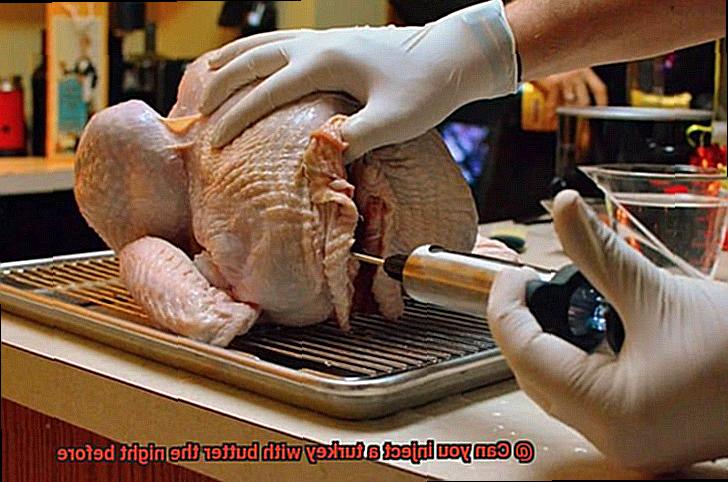
Inject small amounts evenly
When injecting the turkey, ensure that you insert the needle deep into the meat to distribute the butter or marinade evenly. Be careful not to hit any bones or other hard objects in the meat as this can cause the needle to become dull or damaged. Avoid overinjecting as too much butter can make the meat greasy and increase flare-ups on the grill.
Clean up spills immediately
After injecting your turkey, clean up any spills or drips immediately and dispose of any leftover marinade that has come into contact with raw meat. This will help prevent cross-contamination with other foods and reduce the risk of food poisoning.
Use a food thermometer
To make sure that your turkey is fully cooked and safe to eat, use a food thermometer to check the internal temperature. The USDA recommends cooking turkey to an internal temperature of 165°F. This will ensure that any potential bacteria has been eliminated and your meal is safe to enjoy.
Different Types of Butters to Use for Injecting
When it comes to injecting butter into your turkey, not all butters are created equal. Each type of butter has its own unique qualities that can greatly affect the flavor and texture of the meat. Here are five types of butter you can use to inject your turkey:
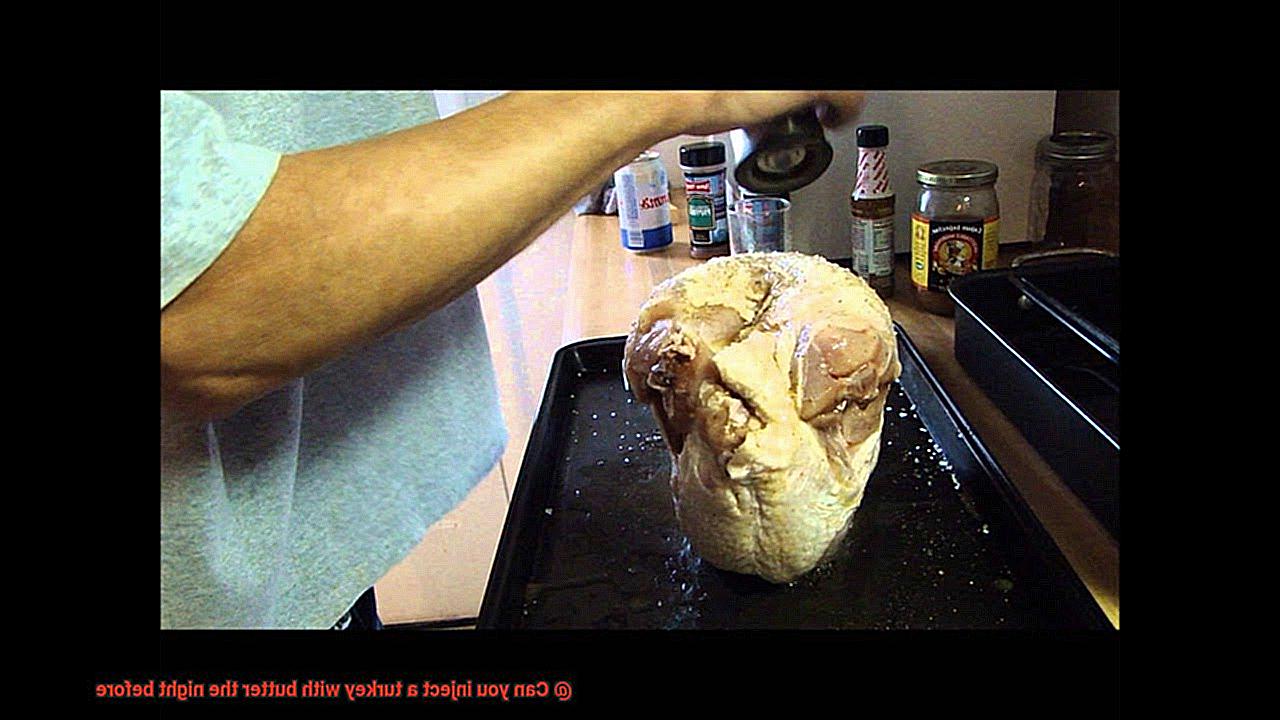
Clarified Butter
This type of butter has had the milk solids and water removed, leaving only the pure butterfat. Clarified butter has a high smoke point, making it a great choice for injecting into a turkey that will be cooked at high temperatures, such as on the grill. It also has a rich, buttery flavor that will enhance the taste of your bird.
Compound Butter
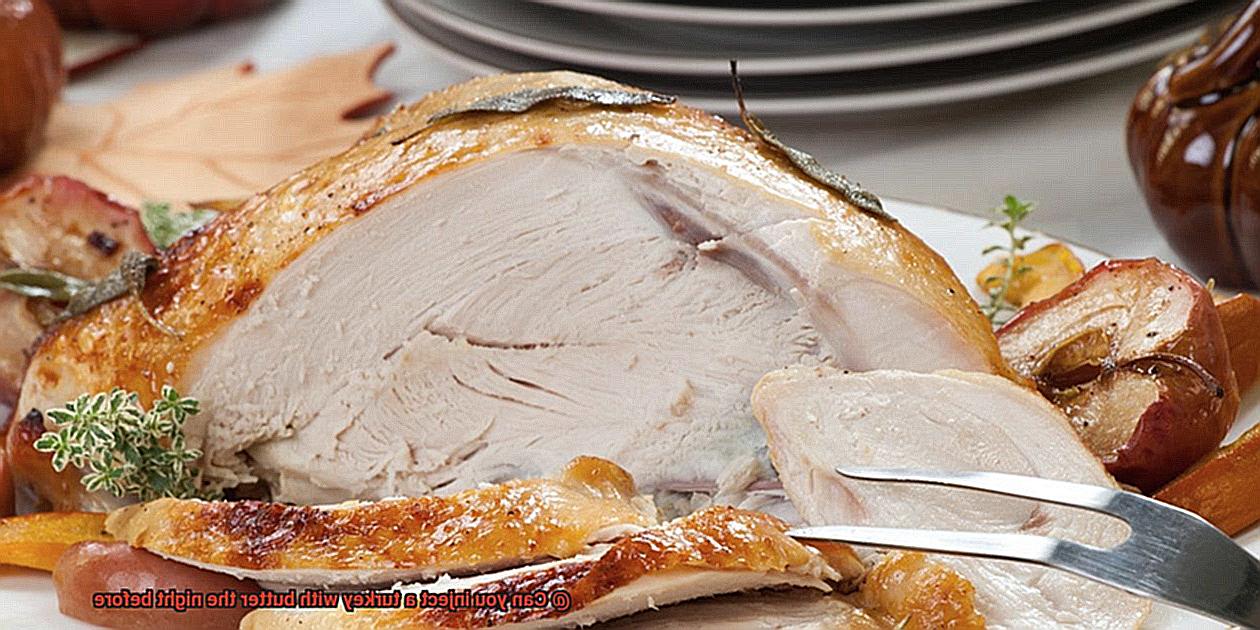
Compound butters are simply butters that have been mixed with herbs, spices, or other flavorings. They can add a lot of flavor to the turkey and can be customized to suit your taste preferences. Some popular flavor combinations include garlic and herb, lemon and thyme, and honey and mustard. Experiment with different combinations to find the perfect flavor for your bird.
Olive Oil
For those who prefer a healthier option, olive oil can also be used for injecting instead of butter. Olive oil is high in monounsaturated fats, which are considered to be healthier than saturated fats found in butter. It also has a mild flavor that won’t overpower the turkey, allowing the other flavors to shine through.
Unsalted Butter
Using unsalted butter allows you to control the amount of salt in the injection mixture, which is essential for getting the right flavor. It’s important to note that if you choose to use unsalted butter, you’ll need to add salt to your injection mixture separately.
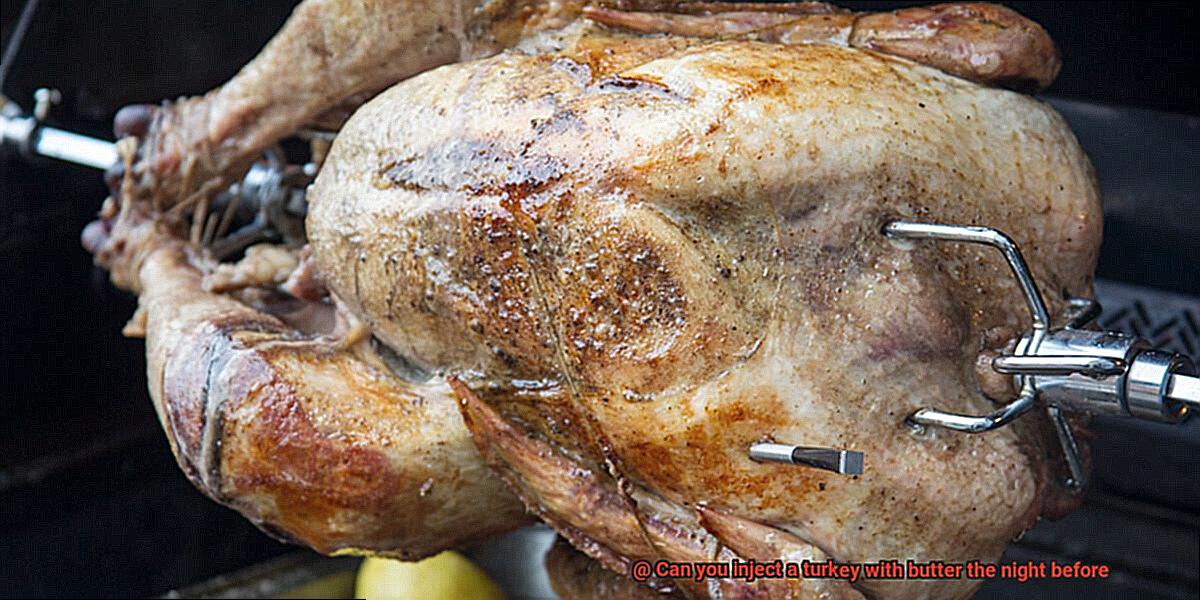
Ghee
Ghee is a type of clarified butter that has been cooked longer, giving it a nuttier flavor and a higher smoke point. This means that it can withstand high heat without burning, making it a great choice for injecting into a turkey that will be cooked at high temperatures. Ghee also has a rich, buttery flavor that will add depth to your bird.
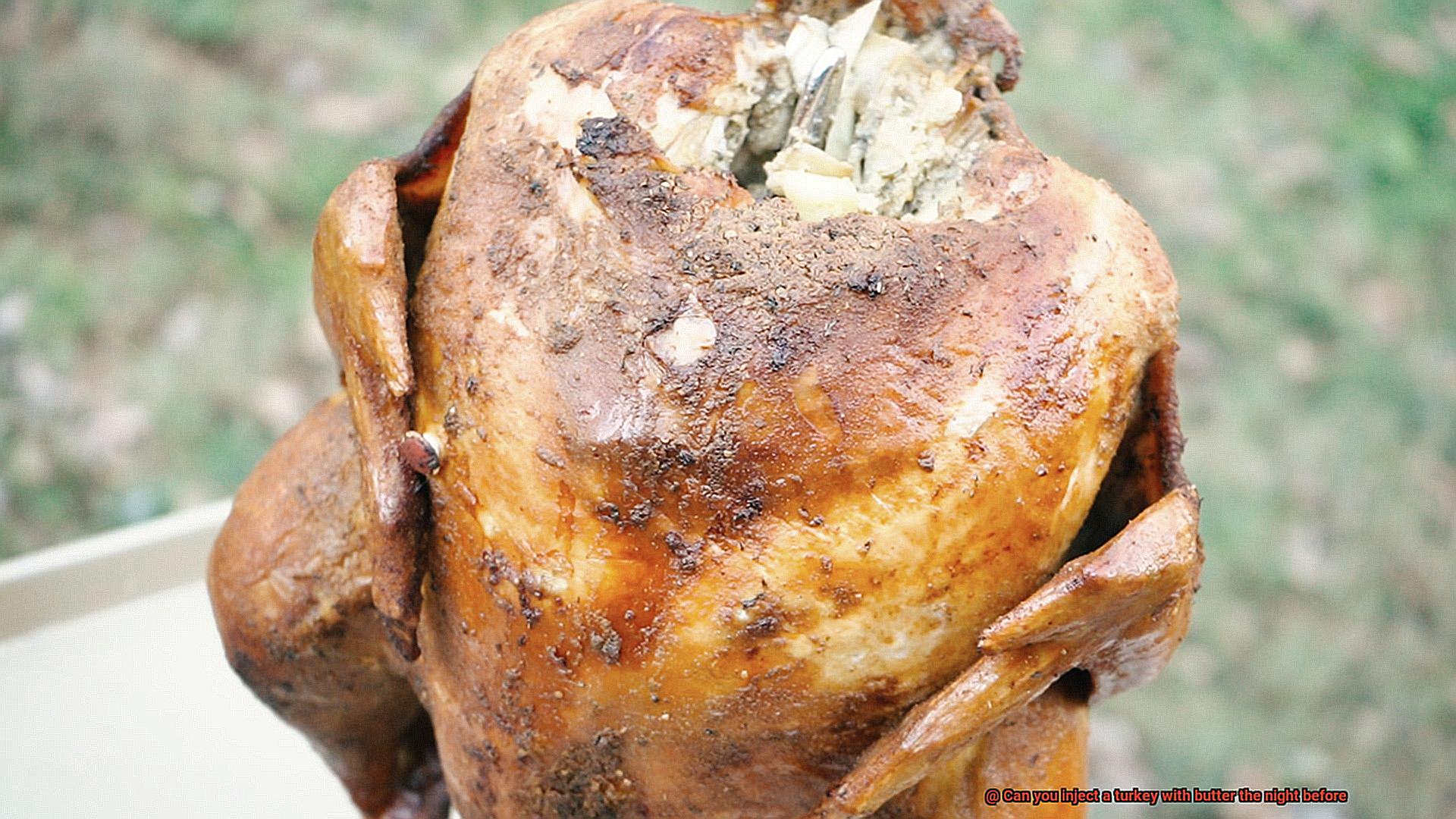
No matter what type of butter or oil you choose to use for injecting your turkey, it’s important to make sure it is at room temperature before injecting. This will ensure that it flows smoothly and evenly into the meat. Additionally, you should always use a food-grade injector to avoid any contamination from non-food-safe materials.
Other Ingredients to Add When Injecting a Turkey
As an expert on the topic of turkey injection, I have plenty of ideas to take your bird to the next level.
Let’s start with garlic. This savory ingredient adds a burst of flavor that pairs perfectly with butter. Mince it up and add it to your injection mixture for an aromatic and delicious twist.
If you’re looking for a tangy kick, try apple cider vinegar. Not only does it add flavor, but it also helps to tenderize the meat, leaving you with a juicy and mouthwatering bird.
For a more herbaceous taste, consider adding rosemary, thyme, or sage. These herbs add depth to the flavor profile and are perfect for pairing with poultry.
If you’re someone who loves a bit of sweetness in their savory dishes, look no further than honey or maple syrup. These ingredients provide just the right amount of sweetness to complement the natural flavors of the turkey.
And for those who like a bit of heat, hot sauce or cayenne pepper can be added for a spicy kick. Just be sure not to overdo it.
Keep in mind that when it comes to adding additional ingredients, it’s important to test out small amounts first and adjust as needed. You don’t want any one ingredient to overpower the taste of the turkey.
Tips for Grilling the Perfect Turkey After It’s Been Injected
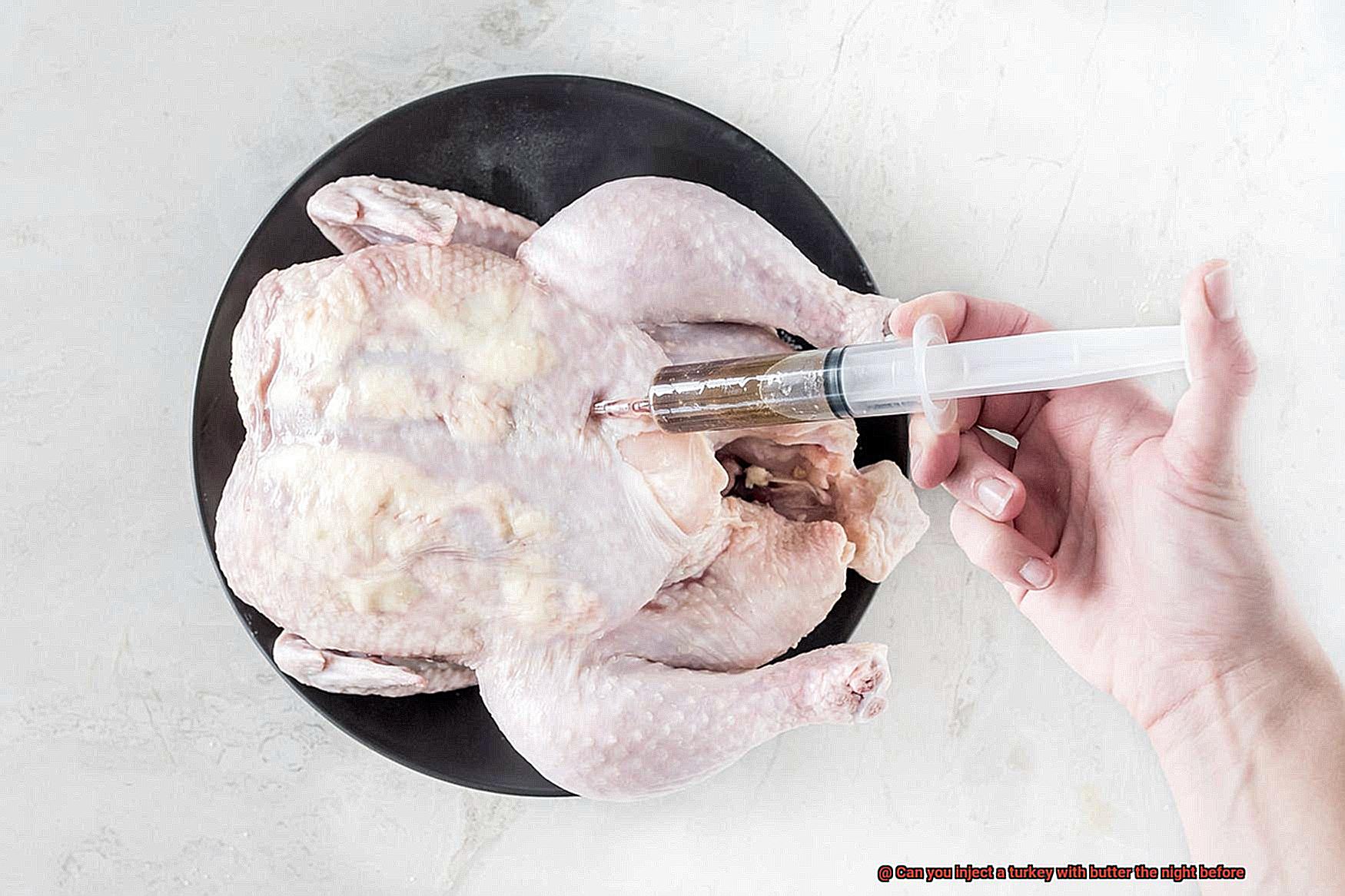
Grilling a turkey that has been injected with butter is a delicious way to elevate your turkey game. But, there are a few steps that you need to follow to ensure that the outcome is perfect. Here are some tips to keep in mind:
Thaw the Turkey
The first and most crucial step is to fully thaw the turkey before injecting it with butter. This ensures that the butter can penetrate the meat evenly and thoroughly.
Inject with Butter
The next step is to inject the turkey with a mixture of softened butter and any desired herbs or seasonings. Make sure to distribute the butter evenly throughout the meat for the best results.
Refrigerate Overnight
After injecting the turkey with butter, let it rest in the refrigerator overnight. This will allow the flavors to meld together and infuse the turkey with deliciousness.
Use Indirect Heat
When grilling the turkey, use indirect heat by placing it on one side of the grill and leaving the other side empty. This allows the turkey to cook slowly and evenly without burning or drying out.
Check for Doneness
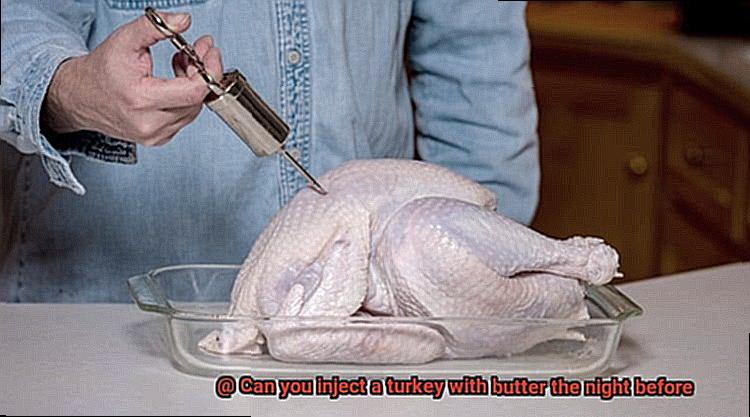
To ensure that your turkey is fully cooked and safe to eat, use a meat thermometer to check for doneness. The internal temperature of the turkey should reach 165°F in the thickest part of the meat.
pTT1oKSzcqA” >
Conclusion
In conclusion, injecting your turkey with butter the night before is an excellent way to elevate the flavor and juiciness of your Thanksgiving feast.
However, it’s crucial to adhere to food safety guidelines by keeping the turkey refrigerated until cooking time and using a sanitized injector needle and syringe. Injecting small amounts of butter evenly throughout the bird will tenderize the meat and enhance its taste.
Experimenting with different types of butter such as clarified, compound, unsalted, or ghee can add unique flavors to your turkey that will tantalize your guests’ taste buds. You can also take it up a notch by adding ingredients like garlic, apple cider vinegar, herbs, honey or hot sauce for an extra kick.
When grilling a turkey that has been injected with butter, ensure it’s fully thawed first and use indirect heat while checking for doneness using a meat thermometer.

